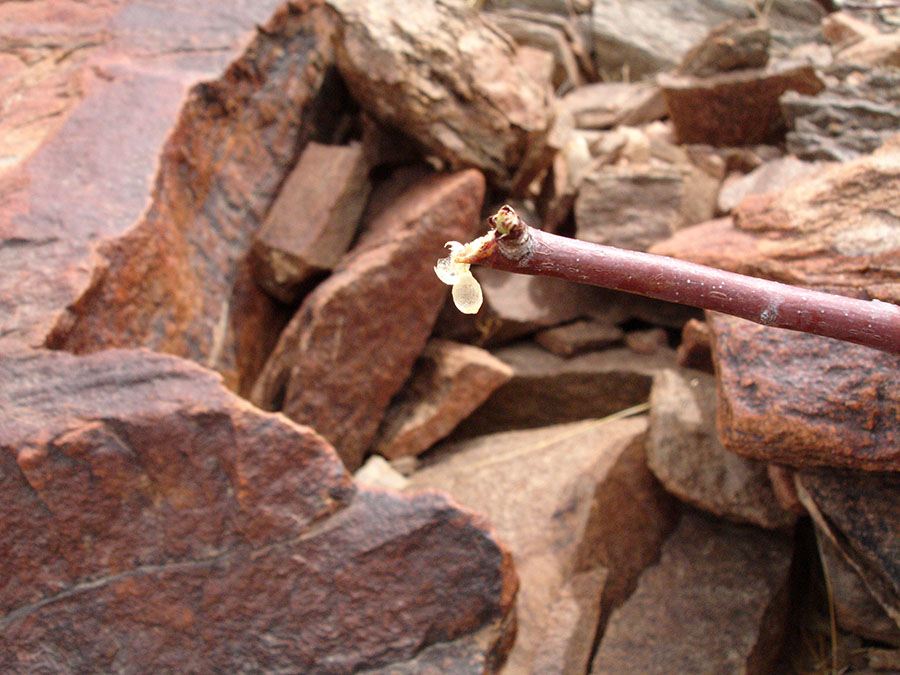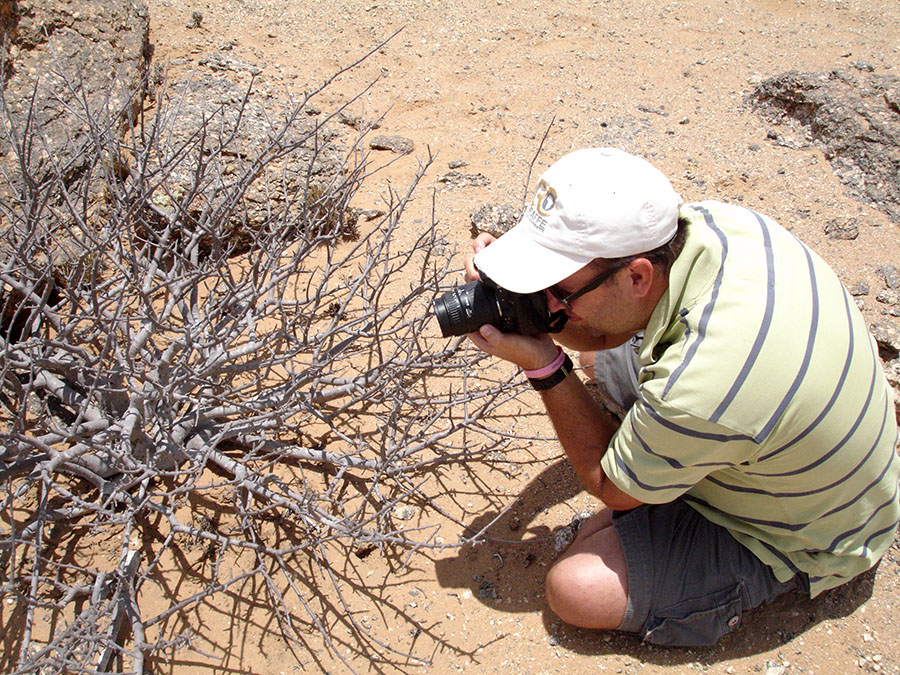
A fine mist of rain falls on the world’s oldest desert, the first rain in 24 months. In a valley apparently devoid of life, the local nomadic Himba women, with babies strapped to their backs, bend over spider-like plants and harvest golden beads of precious resin. This is the Myrrh of the Bible. Excreted from the bark of the Commiphora species, gathered and traded since ancient times for its deep notes of leather and denim.
An NRI project for the US Millennium Challenge Account Namibia is working with local harvesting groups and NGOs such as Integrated Rural Development and Nature Conservation (IRDNC). Ben Bennett, Head of NRI’s Food and Market Department, has recently returned from a field visit to North Western Namibia where he met the team behind this exciting new rural enterprise.
The project, which began in 2010, works with communities to promote sustainable wild harvesting of plant products. These products are then linked to high value local and international markets. The income generated encourages communities to manage the exploitation of their open access resources to ensure future income.
The work is clustered around groups of marketable natural products in areas like cosmetic oils, food oils and herbal remedies. One cluster consists of plants that have been traditionally valued for their fragrant properties.
A small essential oil extraction factory has been opened in Opuwo, the regional capital of Kunene. Here test production is underway of what is hoped will become a new source of Myrrh oil for the world’s fragrance industry. The project has been monitoring the levels of wild harvesting to ensure that optimum sustainable yields are achieved without damaging the resource.
In Opuwo, a visitor’s centre is under construction, which will become an “event” for the high-end tourist who can afford to come to this isolated part of the world. This will include a short video presentation of the harvesting process, a tour of the factory and a chance to buy incense, oils, soaps and cosmetics directly from the producers. This format was borrowed from the very successful Argan Oil visitor centres in Morocco.
The plan is to have a range of oils made from gums, resins and plant extracts, starting with Myrrh from Commiphora wildii, but also including Commiphora angolensis, Sarcocaulon (sometimes referred to as ‘Bushman’s Candle’) and mopane seed extract. The project has negotiated a product development agreement with a major international fragrance house who is working hard to finish the regulatory and safety requirements for major fragrance users in Europe, the USA and Japan.
In early November, the factory was visited by a representative from Shannon Hess, the Sustainability Manager of Burt’s Bees a well known international cosmetics company (global.burtsbees.com) who said her visit was “the best working day of my life in the industry”! You may find products from this project in your local pharmacy quite soon.
So, the next time you tell your children the Christmas story, when you get to the part about gold, frankincense and myrrh, think about how this wild-harvested resin is benefiting the Himba women. The Himba women are improving their livelihoods by selling their traditional perfumes to their community-owned fragrant oil factory, to adorn beautiful people throughout the world.


